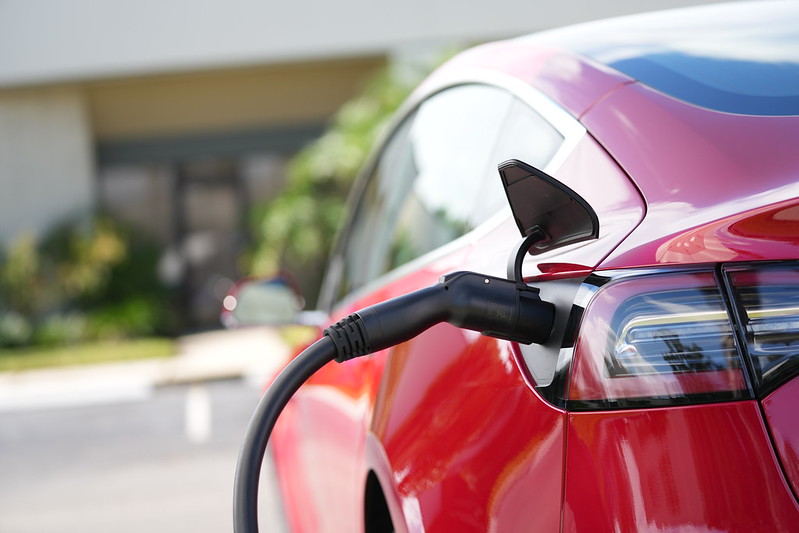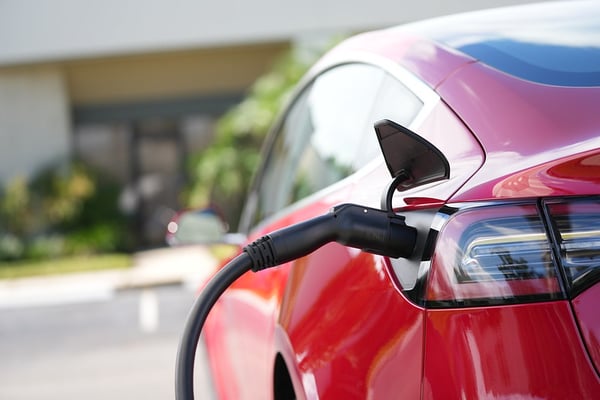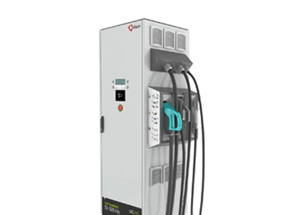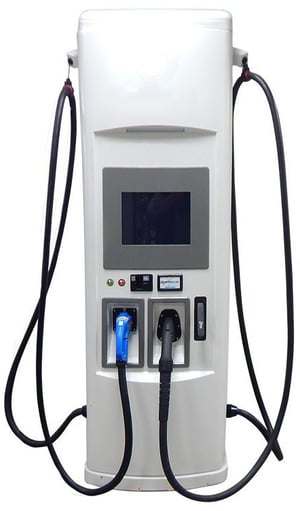EV Charging Basics: Why Fast EV Charging Isn't Always Better
Mar 13, 2023 | 9 MIN READ
 Bigger. Faster. Better. From cars to coffee and food, Americans have an international reputation for our appetites when it comes to the delivery of goods, ingestible or not. That means that, when it comes to EVs, we want electric SUVs and trucks and we want faster charging. Electric trucks and SUVs have hit the market with more models coming soon and, when it comes to charging, DC fast chargers seem to fit the bill. But, from Broadway songs to Harvard homebuilder study advice, we know that bigger isn’t always better, and, it seems, the same is true when it comes to prioritizing “faster.”
Bigger. Faster. Better. From cars to coffee and food, Americans have an international reputation for our appetites when it comes to the delivery of goods, ingestible or not. That means that, when it comes to EVs, we want electric SUVs and trucks and we want faster charging. Electric trucks and SUVs have hit the market with more models coming soon and, when it comes to charging, DC fast chargers seem to fit the bill. But, from Broadway songs to Harvard homebuilder study advice, we know that bigger isn’t always better, and, it seems, the same is true when it comes to prioritizing “faster.”
Quick Links
- What Kind of Battery Do Electric Vehicles Use?
- How Do Electric Vehicles Charge?
- How Fast Does an EV Charge?
- How DC Fast Charging is Different
- Why Fast EV Charging Isn't Always Better
- Choosing the Right EV Charger for Public Property and Infrastructure
What Kind of Battery Do Electric Vehicles Use?
As with standard cars with combustion engines, from the onset, range was an issue. While a full tank of gas could get you pretty far, given the technology, it wasn’t until we started to see improvements in the engine itself that we saw range improve.
Electric cars, and their evolution, aren’t much different. Before electric cars could improve, batteries needed to improve as well. First, they had to be rechargeable. Then, they had to be able to handle (receive) and hold a decent charge. In 1991, lithium-ion batteries hit the market and forever changed the future of not only electronics but also the electric car.
Most EVs these days, save for a few older model hybrids, use lithium-ion batteries chosen for their ability to hold high voltage and charge. This has significantly improved the range of EVs though other issues, like cost, remain. However, research is ongoing and improvements are on the horizon.
.png?width=300&height=200&name=52625334123_85cdec5473_k%20(1).png) How Do Electric Vehicles Charge?
How Do Electric Vehicles Charge?
EVs charge one of two ways. Individuals can use a home charging system, which may be either a Level 1 or Level 2 charger, or they may use public infrastructure and public EV charging stations found in garages, or at apartment and retail complexes, workplaces, stadiums, airports, entertainment venues, and more. Public EV charging stations methods may be Level 2 or DC fast charging (Level 3), but more on that in a minute.
Most electric vehicles use what’s called a J1772 plug; Tesla is the exception and this is true for both the car and charging station. It’s a bit like having a smart TV remote that works only for your television verse using a universal remote meaning Tesla vehicles must use a Tesla charging station and those charging stations are designed for Teslas.
While part of the infrastructure bill push means Tesla chargers will open up, about 7,000 by 2024, to other EVs, drivers must still pay attention to the charging stations available to them. While it’s possible to purchase and use an adapter to make charging options more flexible, options exist. For example, in contrast to proprietary charging is a solution like NovaCHARGE’s EV charging stations which operate on the premise that building and designing with open standards delivers the true accessibility and reliability that are key to adoption and driver satisfaction.
Outside the hardware required to charge in public, EV owners will need to connect to an EV charging network via a smartphone app to access the station and pay for its charging capabilities. For charging station owners, there are multiple business models that provide flexibility for you and your business to define your own pricing and usage models. For example, you can offer MDU residents a certain amount of free charging per month and charge only for charging that exceeds that time. We’ll discuss more about charging networks in a future blog!
How Fast Does an EV Charge?
Perhaps one of the biggest questions for everyone invested in, or thinking of investing in, the EV charging industry whether as an EV owner or as a business or municipality offering charging stations is “How fast does an EV Charge?” For owners, they clearly want to know how long an EV will need to charge to get them where they need to go and, for many business owners, it means how usage and pricing will deliver ROI.
The short answer is this: it depends on the vehicle and the charger. It’s a bit variable. More specifically, vehicles are limited to charging at a voltage they can accept. And, on the other side of it, chargers are limited, by their level/type, to the voltage they can deliver.
Level 1 chargers, for home use, rely on a standard 110 volt outlet and so are the slowest to charge, providing 3-5 miles per hour or charging. Level 2 chargers use 240 volts and can deliver 12-60 miles per hour of charging. These chargers rely on the car to convert the power from AC to DC. In contrast, fast chargers deliver the direct current (DC) right to the car, without the need for conversion, speeding up the charging process.
DC fast chargers, because they use direct current (DC) power and 480 volts, can charge a vehicle much more quickly, sometimes up to 10 miles of range in one minute. For that reason, they’re highly sought by owners of electric fleets. DC Fast charging stations are also often found at fueling stations near highways where drivers are looking to complete a charge quickly to finish their trip. While meeting delivery times and getting where you need to go quickly is important, questions remain about how safe DC fast charging is for electric vehicles.
 How DC Fast Charging is Different
How DC Fast Charging is Different
In addition to the voltage and power, and thus the charging speed, DC fast chargers also have different connectors. While most vehicles use the J1772 connector for charging at Level 1 and Level 2 stations, DC Fast chargers have three different connectors, depending on your car model. Those connectors include:
- Combined Charging Solution (CCS)- This connector combines the J1772 connector but adds two additional high speed charging pins. CCS, developed by the Society of Automotive Engineers, is utilized by most major car manufacturers in North America,from General Motors and Ford to BMW and Porsche.
- CHAdeMO- This connector, developed in Japan, is only used in the U.S. by Nissan and Mitsubishi. However, some older model Kias may also have this connector as, until In 2018, Kia used CHAdeMO as well. Because they do not combine with the J1772 port, they need an extra ChadeMO port on the car.
- Tesla- Again, Tesla’s connector is proprietary, but the Tesla inlet or port will accommodate any type of Tesla charging station plug. This means that while Tesla owners don’t need multiple charging connectors, it does mean that only Tesla owners can use their DC Fast charging stations called “Superchargers.”
Finally, as a car will throttle charging power to match its capacity, DC fast charging, when it hits 80%, can also be throttled to match that of a Level 2 charger speed.
Why Fast EV Charging Isn't Always Better
When you’ve got deadlines, a tight schedule, or are just in a rush, charge time becomes a big issue for drivers, fleet managers, and business owners alike. And, with limited infrastructure (though that’s changing) or even unreliable infrastructure, fast charging seems like the ultimate solution. However, those same issues (accessibility and reliability) plague DC fast chargers as well.
Further, there are additional concerns about battery life and the power grid when it comes to DC Fast Charging. To start, several studies have revealed that when DC fast charging is the primary method of charging an EV, it can degrade the battery. This is especially true when subjected to extreme climates in the same way that a normal car battery is impacted by extreme temperatures. In fact, one study revealed that using a DC fast charger 3x in one month, in an extreme weather environment, resulted in EV batteries degrading 10% more than cars that had not used the DC fast charger.
As for the power grid? A study conducted by the Idaho National Laboratory (INL) revealed that DC fast charging, especially in a critical mass, can create large and unpredictable loads on the grid that may present challenges to electric infrastructure. However, electric utilities are actively working on methods to diminish that impact including on site battery storage and business models that allow for things like “surge” pricing. More importantly, ChargeUP which is NovaCHARGE’s nextgen charging platform management system integrates into automated demand response utility systems, allows host and site controls, and enables flexible business models, all of which can mitigate grid challenges and deliver sustainable and seamless EV charging for all.
 Choosing the Right EV Charger for Public Property and Infrastructure
Choosing the Right EV Charger for Public Property and Infrastructure
Given what we know, and what’s in the works and evolving all the time as technology does, how does one choose the right EV charging station for a municipality? A business? An MDU? Clearly, DC fast chargers have their place in most solutions as there are times, we all know, when you need the charge and you need it fast, but one of the things you’ll want to consider is how often that’s true and is it worth the potential impact on battery life?
For most organizations, a hybrid solution that includes both Level 2 and DC fast chargers is the best solution, especially when there is considerable “dwell time.” Dwell time refers to how long an individual or vehicle will be at the charging station. For example, a delivery fleet or municipality may be busy during standard business hours, but have limited use beyond that. That means they have a good amount of dwell time in the off hours. The same is true for residents of an MDU. While some may have a revolving door on their apartment, most residents will be parked overnight, so Level 2 charging stations will be sufficient.
And yet, there will always be demand for, and a perception that, faster is better. To meet that demand, offering both options is best, especially when consumers are involved and the location may have variable dwell times. Further, consider that, as part of your business model, you can offer DC fast charging at a premium. As for fleet managers or municipalities that have undergone fleet electrification, it still may be worthwhile to offer a mix in case of an emergency or unforeseen circumstances. One can plan, but it’s better to be prepared. Most folks in logistics know that.
Moreover, the charging method is just one element you’ll want to consider as you plan your investment in EV charging and the future. It is the network or charging platform management system that will ultimately deliver true reliability, accessibility, flexibility, and scalability, especially when it comes to future forward thinking. DC charging is faster, but faster doesn’t always mean better. In fact, better is better.
And that’s why NovaCHARGE set out to create a better solution that would deliver the flexibility and reliability that your business and your consumers demand. If you’re ready to start moving toward the future, and toward better, get in touch with us today, start the conversation, and join the rEVolution.
